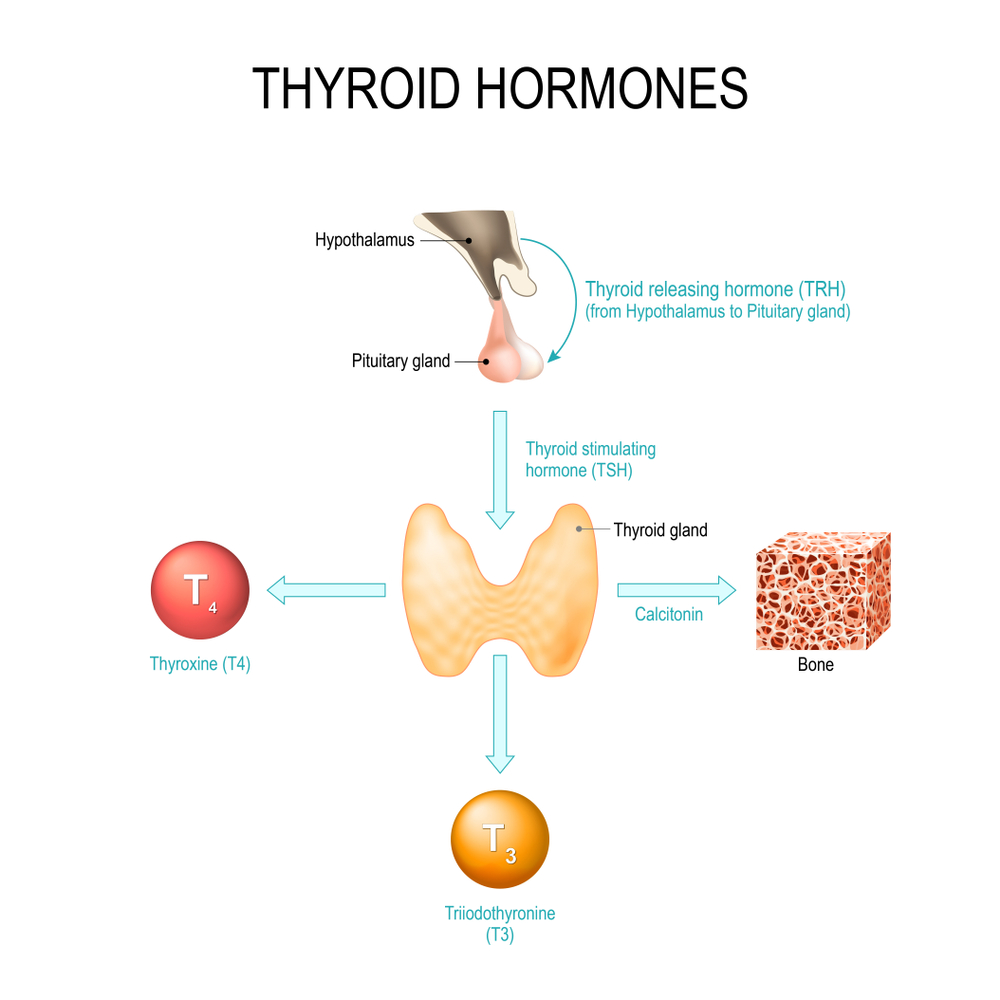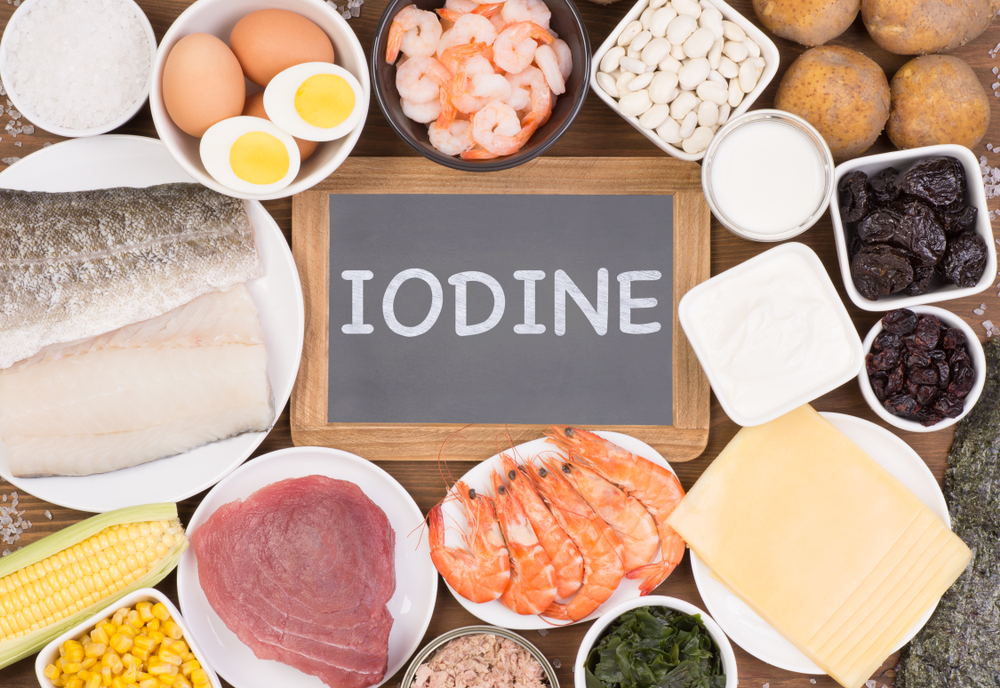When you think of iodine, do you think about the yellow substance that is used as a disinfectant on skin when an operation is performed? For those of you who may have experienced a surgical procedure you’ll know what I mean and how difficult it can be to wash the iodine from clothing. But iodine is also a nutrient that is required by the body. It’s a mineral that we must consume in our diet to support our metabolism and particularly for the healthy functioning of the thyroid gland, growth and development of a baby’s brain during pregnancy (BDA, 2019).
Metabolism
What is meant by metabolism? This is the bodily function of breaking down certain food molecules mainly and the taking the energy from these chemical reactions and using it to build up or make molecules in the body that require energy. In effect it’s the breaking down and synthesising of molecules by the transfer of energy. The process of metabolism is an essential part of human life, and is helped by thyroid hormones thyroxine T3 & T4. Thyroxine requires iodine to function properly.

Development of a baby’s brain
Thyroxine T3 is the active form and as well as being important for growth, development and metabolism it’s important for brain and neurological development of the foetus. There is evidence to suggest that mothers with low iodine status gave birth to children with low cognitive skills at the age of eight, compared to children of mothers with sufficient levels of iodine. Children born to low iodine status mothers also were found to have impaired working memory, language and motor skills, had lower spelling scores in school, lower reading accuracy and lower verbal IQ at the age of eight. (Bath, 2019)
Iodine intake
It could be argued that many people around the world do not consume enough iodine. Recent research in the UK has shown mild deficiency in school girls and pregnant women (BDA, 2019). It is therefore becoming a concern that adult women are not getting enough iodine, this is particularly an issue for women of child bearing age, as iodine needs are higher for this group than for any other at any time.
An iodine deficiency is commonly associated with goitre – a swelling in the neck where the thyroid gland is overworking to produce thyroxine under iodine deficiency. The condition is not usually seen in the UK, but as iodine intake is becoming a worry for the health of the population for many reasons such as dietary choices, consumption of low nutrient foods, popularity of plant based non-dairy milk, then a return of goitre should not be dismissed.
Some countries have introduced iodised salt as a means to tackle iodine deficiency, however a review study found that although iodised salt improved iodine status in the population studied no conclusions could be made about improvements in physical and mental development in children and levels of mortality (Wu, Liu, Clar, 2010). More research is needed on the benefits or not of supplementing foodstuffs with iodine when it comes to health outcomes associated with iodine deficiency. The UK do not have regulations to cover iodine fortification, but it is possible to purchase iodised salt from a supermarket.
Daily requirements for iodine for adults are 150 mcg, for pregnant and breastfeeding women it increases to 200 mcg. This is because the brain of the foetus requires a sufficient supply of thyroxine for healthy development so demands on mum increase at this time, and it’s important that she has enough iodine to synthesise thyroid hormones for both baby and herself.
Excessive iodine intake over a long period of time can cause thyroid problems and should be avoided. Consuming 500 mcg or less per day via a supplement is unlikely to be harmful (NHS, 2017). However, obtaining iodine from a healthy balanced diet is preferred.
Sources of iodine
Cow’s milk (non-organic) is a rich source of iodine. A 200 ml glass can provide between 50 – 100 mcg of iodine depending upon the season – the higher level being in winter. Organic cow’s milk is also a good source of iodine, but in a 200ml glass the levels are lower at between 30-60 mcg (BDA, 2019). You may ask why this is? The iodine levels in cow’s milk come from the feed and disinfectants used during milking. Organic farming it could be argued, is more restricted in the types of disinfectants that can be used. Don’t be alarmed, we need this iodine in our diet for all the reasons mentioned above.

Other rich sources of iodine are white fish where a 120 g portion of haddock provides 390 mcg of iodine and 120 g of cod provides 230 g of iodine.
If you are vegan or vegetarian it is more difficult to find common foods as rich single sources of dietary iodine, so care must be taken to ensure intakes are optimised or a supplement is taken. Common sources of iodine for this group include green leafy vegetables, nuts, bread, and for the vegetarians – cheese, yoghurt and eggs. Most of these non-dairy sources provide up to 5 mcg per portion of between 25 – 80 g.
The big exception for this group is kelp (kombu) which is an extremely high source of iodine where 2,984 mcg can be found in 1 g. It could be argued that this is too high and the British Dietetic Association does not recommend pregnant women consume kelp, or indeed any adult consumes it more than once a week (BDA, 2019)
Recommendations
As an adult woman of childbearing age and particularly if you are planning to get pregnant, you should consult your GP about your iodine status up to 6 months prior to planning a pregnancy. Its important to not be deficient when planning a pregnancy and to ensure sufficient iodine is consumed throughout pregnancy and afterwards if breastfeeding.
In general, adults should be aware of their diet and ensure they are consuming the foodstuffs which are a rich source of iodine, because the effects of deficiency will result in issues with metabolism, wellbeing, growth and development of cells
References






